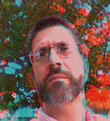The following article is from the Kansas City Star. The managers at my theatre all got a kick out of Lucas's understanding of projection..
http://www.kansascity.com/mld/kansascity/entertainment/movies/3255683.htm ***
Lucas blasts into the future with digital `Clones,' but theaters have to catch up
By ROBERT W. BUTLER
The Kansas City Star
The future is here.
At 12:01 a.m. Thursday morning the first paying customers in selected theaters -- including the largest auditorium of AMC's Studio 30 megaplex in Olathe -- will sit back and experience "Star Wars: Episode II -- Attack of the Clones."
It will mark the first time a major Hollywood live-action blockbuster has been shot, edited and projected in the digital process. Fans who see the movie in Studio 30's digitial auditorium -- the only digital screen in the metro area and one of only about 60 on the planet -- will experience a depth, clarity and subtlety of lighting that in some instances seems pratically three-dimensional.
But that may not necessarily be to the liking of film buffs. Unlike projected film, a digital movie doesn't flicker. Rather, it flows. There is no gate -- a mechanism in a conventional movie projector that rapidly opens and closes to allow separate frames of film to be illuminated. As the gate jiggles, it creates the flickering sensation that has accompanied cinema since its creation more than a century ago.
"Some people call the flicker created by the giggling gate the 'soul of film,'" Lucas told reporters last week during a series of interviews at his Skywalker Ranch north of San Francisco. "Really, all it is is the gate moving around, making it hard to see the image so that it's sort of fuzzy. You can create that effect digitally if you want. But it's easier on the eyes if you don't have it."
Some say a digitally made and projected film gives the viewerthe illusion of being immersed in the scene rather than merely watching it.
"It's like going from a cassette tape to CD sound," explains Brett Miller, vice president of operations for the Lenexa-based Dickinson chain, which recently installed a digital projector at its new NorthRock multiplex in Wichita. "It's so much sharper -- just beautiful."
Smack in the mainstream
Technically speaking, "Attack of the Clones" isn't really a film, because true film -- that perforated strip coated with light-sensitive chemicals -- has been eliminated from the process.
Instead Lucas shot his latest space fantasy using a "24-frame high-definition progressive scan" digital camera specially made for him by the Sony and Panavision corporations. The images he captured were not frozen on film but collected on a computer hard drive, then manipulated by digital effects artists to create the fantastic worlds of a long-ago time in a galaxy far, far away.
Until now digital filmmaking has been largely the domain of moviemakers trying to avoid the high costs associated with conventional film, particularly expensive laboratory developing fees and the price of scanning film footage into a computer so that it can be edited electronically (a process pioneered several years ago by Lucas and now used throughout the industry).
Recent low-budget movies shot digitally (although they had to be transferred to film so they could be shown in the theaters) include "The Anniversary Party," "Italian for Beginners," "Breaking the Waves," "The Center of the World," "Time Code" and virtually all documentaries in recent years.
But those projects inhabit the margins of mainstream moviegoing. They were made with less-than-perfect cameras and look more like videotape -- fuzzy and blurred -- when projected on the big screen.
"Attack of the Clones," though, is as mainstream as you can get, part of the most lucrative and popular movie franchise of all time. Its images are near-perfect. And Lucas is using the technical excellence of his latest movie as a sort of velvet gauntlet to coax -- or club -- theater operators and the big studios into enlisting in the digital revolution.
The problem is money. Nobody argues that digital filmmaking is the wave of the future. But exhibitors so far have been unwilling to pay the $150,000 or so per auditorium required to install digital equipment. Most of the more than 3,000 screens showing "Clones" this weekend will be using conventional prints.
And that clearly frustrates Lucas, who described to reporters a near-conspiracy between the studios and the exhibitors to block the spread of digital cinema.
"For about a year we've been struggling to get theaters to go for this, and they've locked arms and said, basically, `We're not going to do it,' " Lucas said." `And if anybody does, they're breaking this sacred oath we have.'
"We've even offered to give certain theaters digital equipment for free. And those theaters are being told, `Don't take it from them.' It's as if we're drug dealers, and if these theaters start using digital they'll never go back. The studios have founded committees and decided to study the matter for a number of years.
"They're stalling because they want to know how they can make money from this. The issue is you don't make money from this. You just have to put aside your greed for the sake of the audience."
Lucas said he had hoped that "Clones" would be shown digitally in 400 or more theaters. He'll have to settle for only 60, most of them in North America.
In Kansas City, AMC spokesman Rick King suggested that the industry's slow immersion into digital projection is less about conspiracy than about caution. Exhibitors are still reeling from a series of bankruptcies that resulted in part from a competitive building spree in the '90s.
"This is a far more complex transition than any other change the industry has experienced, certainly much more complex than the arrival of digital sound a few years ago," King said. "AMC has been a leader in the field testing of digital projection, and we're big proponents of digital evolution.
"But before we can move forward we have to make good business decisions, and there are just too many complex issues out there that haven't been resolved yet."
Digital projection will someday become the norm, King said, adding that it will probably co-exist with conventional film.
So, whether it's a case of conspiracy or just industry-wide caution, most "Star Wars" fans will have to watch "Attack of the Clones" in conventional theaters using conventional film projection.
And what they'll get is a rapidly deteriorating imitation of the real thing, according to "Clones" producer Rick McCallum, a former Kansas Citian who came to work for Lucas more than a decade ago.
"You spend $100 million making a film over four years...now how do you get that to the audience so they can see the exact film you made?" McCallum said. "So that it's not going through the degradation of exhibition prints that are run off at 1,600 feet a minute in what effectively is a laundromat? The labs that make the exhibition prints do the best they can, but it's a photo-chemical process and every day the chemicals are a little different. It's alchemy. And it's not reliable.
"Then once a release print goes on a platter system at a multiplex it's run 25 to 50 feet over wires to a projector and it becomes degraded very quickly. Within a couple of days it doesn't even resemble the film we made. It's absolutely imperative to us to change that."
With digital prints -- delivered to the theater on a DVD or via fiber optics or satellite -- the movie is always seen in its pristine state. No matter how many times it is shown, there will be no dust spots, tears, scratches, faded colors or blips.
McCallum argues that the studios are the ones who stand to gain most from the digital revolution. Currently, he said, the studios spend $1 billion a year to make and ship exhibition prints, an expense that could be eliminated with digital delivery.
"They have the most to gain from sitting down and working this problem out," McCallum said. "Instead they're putting the brakes on, stonewalling because they're fearful of change, fearful they're going to lose control.
"But they're going to lose, anyway. We believe that with only 60 digital theaters out there, those theaters will differentiate themselves. They'll gross three or four times as much as their counterparts. Once that happens it sends a very clear signal that people are willing to get in the car and drive an extra 30 or 40 miles to see a movie that's crystal clear, with no weave, scratches, dirt.
"The studios just don't believe audiences care about it. They're about to learn differently."
In fact, Lucas promises that when the next "Star Wars" movie comes out in a couple of years, he'll allow it to play only on digital screens.
--------------------------------------------------------------------------------
To reach Robert W. Butler, movie editor, call (816) 234-4760 or send e-mail to bbutler@kcstar.com.

 Home
Home
 Products
Products
 Store
Store
 Forum
Forum
 Warehouse
Warehouse
 Contact Us
Contact Us




 Printer-friendly view of this topic
Printer-friendly view of this topic
























